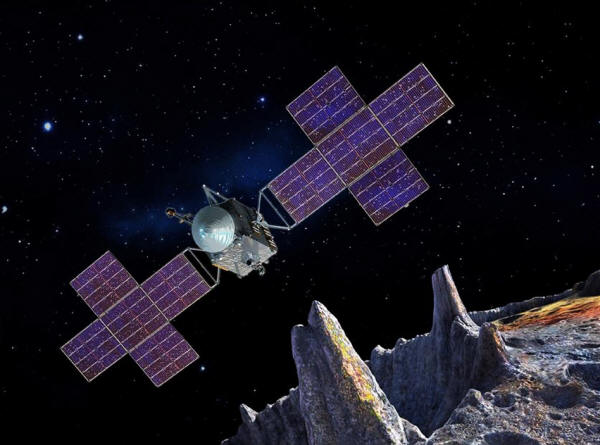|
February 1, 2021 from AccessWire Website
Bob Goldstein, CEO of US Nuclear Corp (UCLE:OTCQB) weighs in on asteroid mining,
The mining of asteroids has long been viewed as a vast source of wealth consisting of rare earth elements and precious metals.
The short supply and high
prices for these minerals have put us at odds with other countries,
disrupting the supply chain of phones, computers, electric cars, and
slowing our economic growth. In fact, terrestrial reserves on Earth
could be exhausted within the next few decades.
With NASA and other
companies investing in and developing nuclear power for use in space
travel and colonization, the reality of mining asteroids is closer
than ever before.
They fall into three main types:
Many of the metallic asteroids are composed mainly of nickel and iron, but also contain sizeable quantities of important rare earth elements and precious metals including platinum and gold.
While it is quite
difficult to analyze asteroid composition from here on the earth's
surface, there are another 10 asteroids have been identified as
likely cost-effective mining targets to date.
However, with US
government, private, and public companies alike committed to
developing nuclear power and propulsion systems for space travel and
colonization, and it is only a matter of time before we start mining
asteroids to cover our depleting terrestrial reserves and enable
human expansion into the solar system.
Fusion power releases up to four times as much energy as fission, and uses fuel that is lightweight, low-cost, safe, and sustainable.
Spacecraft with fusion powered propulsion systems could not only reach the asteroid belt in as little as 7 months, but could be powerful enough to transport the asteroid to an earth orbit where it would be much more efficient to mine and transport these valuable resources to earth.
Actual results may differ from expectations, estimates and projections and, consequently, you should not rely on these forward looking statements as predictions of future events.
Words such as,
...and similar expressions are intended to identify such forward-looking statements.
These forward-looking
statements involve significant risks and uncertainties that could
cause the actual results to differ materially from the expected
results.
|


